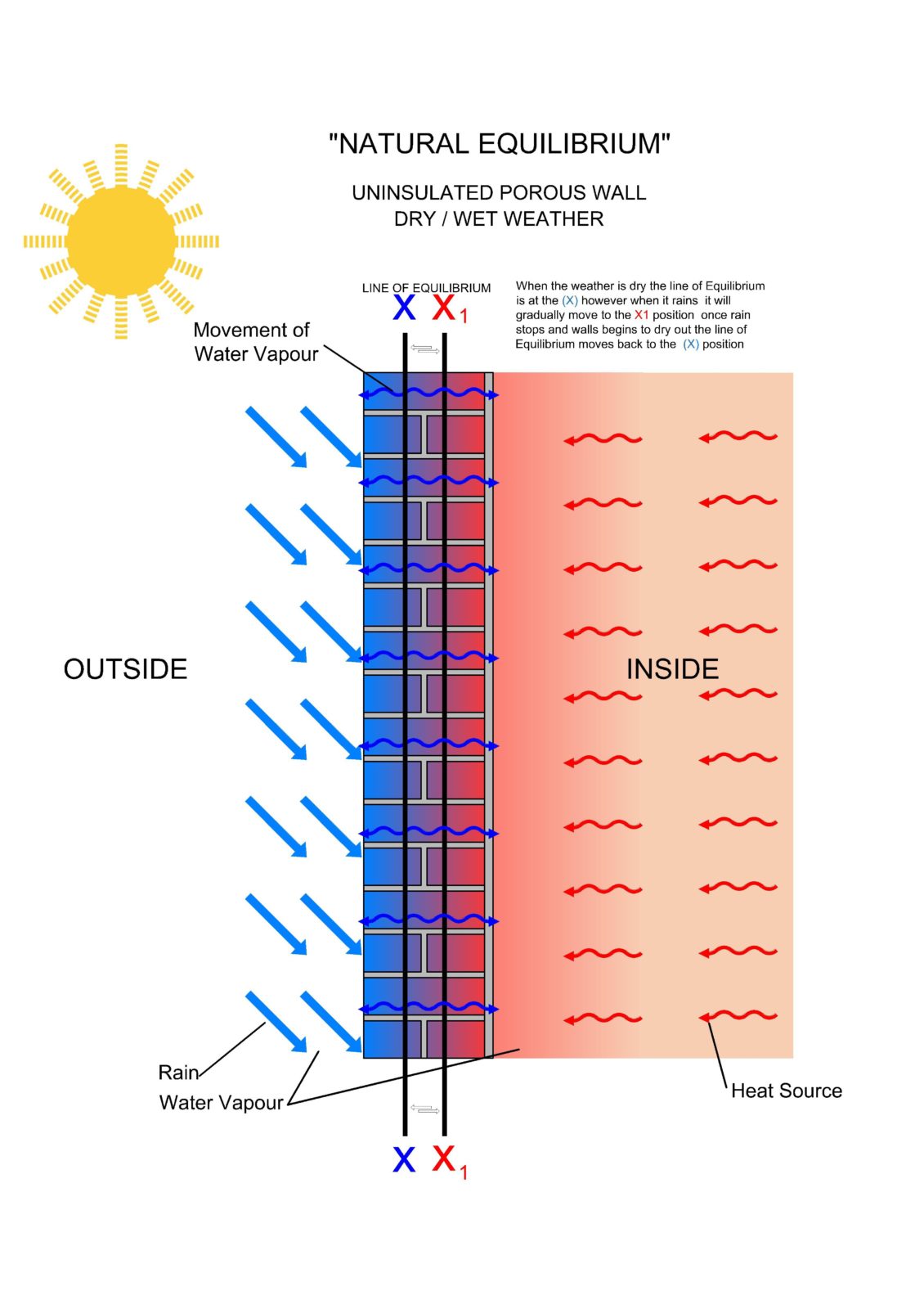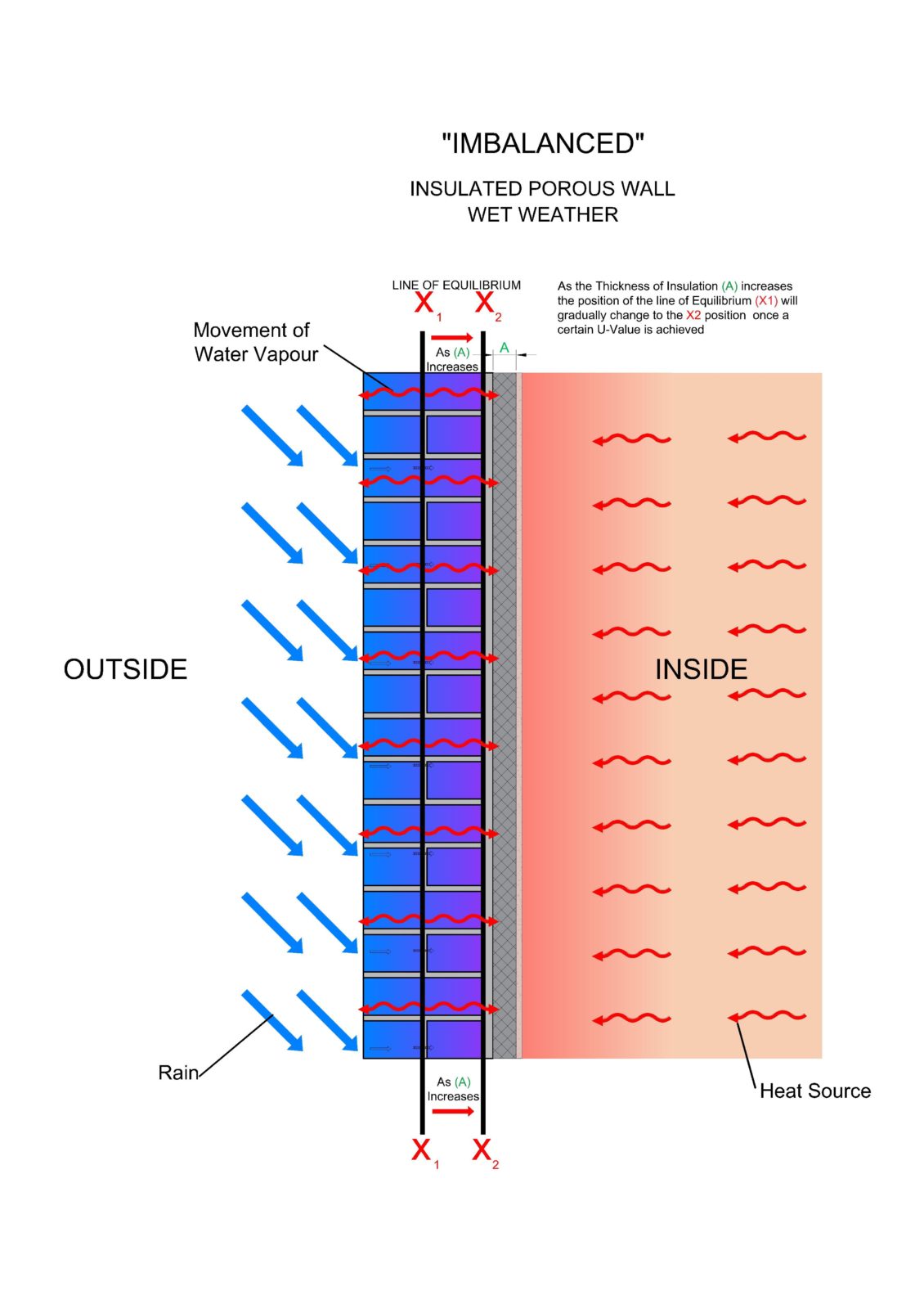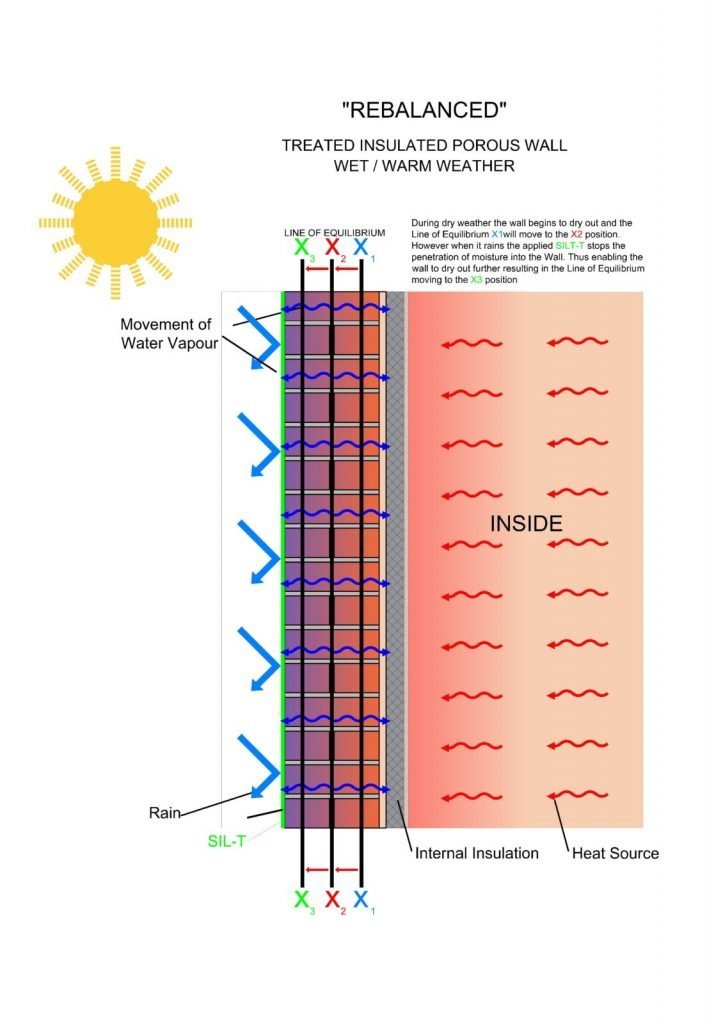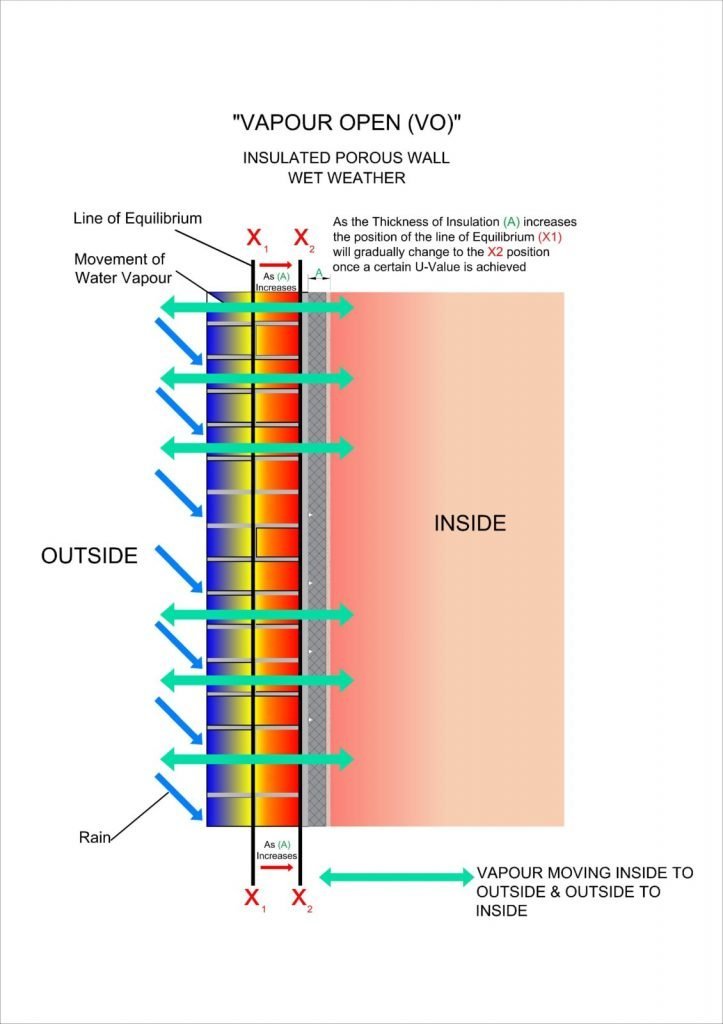Hoe om te gaan met isolatie van je buitenmuren?






THE EFFECTS OF ADDING INTERNAL WALL INSULATION Moisture movement , especially in porous walls. has to be taken into account when planning your internal wall insulation upgrade. Adding insulation to the inside of a solid wall reduces heat loss and has an effect on its natural ability to dry. The diagrams below show how adding Internal Wall Insulation effects moisture movement in walls. Existing porous walls that are finished internally with lime should be in moisture equilibrium due to heat from the sun externally and from heat from the inside fire etc? Now that the seasons are getting wetter for longer periods, the question we must ask is this still the case? X – X1 When a wall is insulated internally it greatly reduces the heat loss from the inside of the house preventing natural drying and moving X1 – X2. This prolonged wetting on the inside of the wall can lead to long term problems. Even natural insulating materials like wood fibre will start to degrade with prolonged dampness. Treating the external wall face with water closed vapour open Hydrocoat we add a “Gortex” coat and prevent water ingress but allow water vapour to escape slowly to dry the wall. The insulation upgrade’s thermal resistance (R) determines how long this takes. The secret is to balance heat loss and required U Value carbon targets. Based on the type of wall you have you need to decide what system best suits your wall type. We have three options: Vapour Open; Vapour Closed; or Vapour Closed with Reverse Diffusion Membrane. We can advise you to ensure you make the right decision. The illustrations below show the differences between VO, VC and VCRD Solutions. In the spring / summer a wall can experience prolonged wetting and then drying and can result in “reverse diffusion” where the wall dries inwards by evaporation and vapour moves inwards. A VO wall and IWI system work in equilibrium to control the vapour exchange. A vapour closed system does not allow vapour to pass from “in to out” or “out to in”. Due to reverse diffusion there is a condensation risk on the inside surface of the wall in prolonged wetting and quick drying period. A IWI system using a vapour open insulation material with a reverse diffusion membrane allows vapour to pass inwards through the membrane in a “Reverse Diffusion” phase but does not allow vapour from the inside.
Ook interessant om te lezen
BouwGezond B.V.
-
+31850661200
-
info@bouwgezond.nl
-
Venneslatweg 11
7151 HD Eibergen
4 redenen om voor
Bouwgezond te kiezen
-
Creatief maatwerk en scherpe prijzen
-
Altijd open calculatie, geen pakketprijzen
-
Kwaliteit
-
Bevlogen vakmensen, altijd die extra stap!


